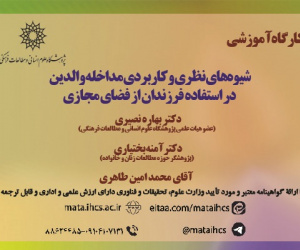رویکرد دستورگرایانه به امکان ساختارمندی حقوق بین الملل (مقاله علمی وزارت علوم)
درجه علمی: نشریه علمی (وزارت علوم)
آرشیو
چکیده
نگاهی کل نگر به حقوق بین الملل کلاسیک، تصویری از مجموعه قواعد پراکنده توافقی را نشان می دهد که الزاماً بین قواعد مزبور، هماهنگی به مثابه یک کل به هم پیوسته و یکپارچه مشاهده نمی شود و چنین مجموعه ای نمی تواند از یک نظم دستوری، شامل سلسله مراتب قواعد و تضمین حقوق بنیادین بهره مند شود. با وجود این، حقوقدانان متأخر، حقوق بین الملل را نیز یک «سیستم» حقوقی توصیف کرده اند. تحقیق حاضر با روشی توصیفی به دنبال راستی آزمایی این ادعاست و نشان می دهد که اولاً عین گرایی رایج در تمام اجزای حقوق بین الملل در کنار تکثر بازیگران متکثرالمنافع فعال و منفعل در جامعه بین المللی، در ظاهر مانع پذیرش نظام ساختاری می شود؛ ثانیاً رویکردهای تازه تر، ناگزیر از پذیرش ارزش های ذهنی است و در نتیجه، یک همگرایی مبتنی بر هدف در جامعه بین المللی پدید آمده است. نتیجه این تز و آنتی تز آن است که حقوق بین الملل، همچنان در حال تکوین است و خوانش دستوری با استفاده از امکانات موجود، ساختارمندی آن را تقویت می کند.A Command-Based Approach to the Possibility of Structuring International Law
A holistic view of classical international law presents an image of a collection of scattered consensual rules, where coordination as a cohesive and integrated whole is not necessarily observed among these rules. Such a collection cannot benefit from a normative order that includes a hierarchy of rules and guarantees fundamental rights. Nevertheless, later legal scholars have described international law as a "system" of law. This research, employing a descriptive method, seeks to validate this claim and demonstrates that, firstly, the prevalent objectivism in all components of international law, alongside the multitude of active and passive interest-driven actors in the international community, seemingly hinders the acceptance of a structural system; secondly, newer approaches inevitably embrace subjective values, resulting in a goal-oriented convergence within the international community. The outcome of this thesis and its antithesis is that international law is still evolving, and a normative reading utilizing existing capacities enhances its structuring.











